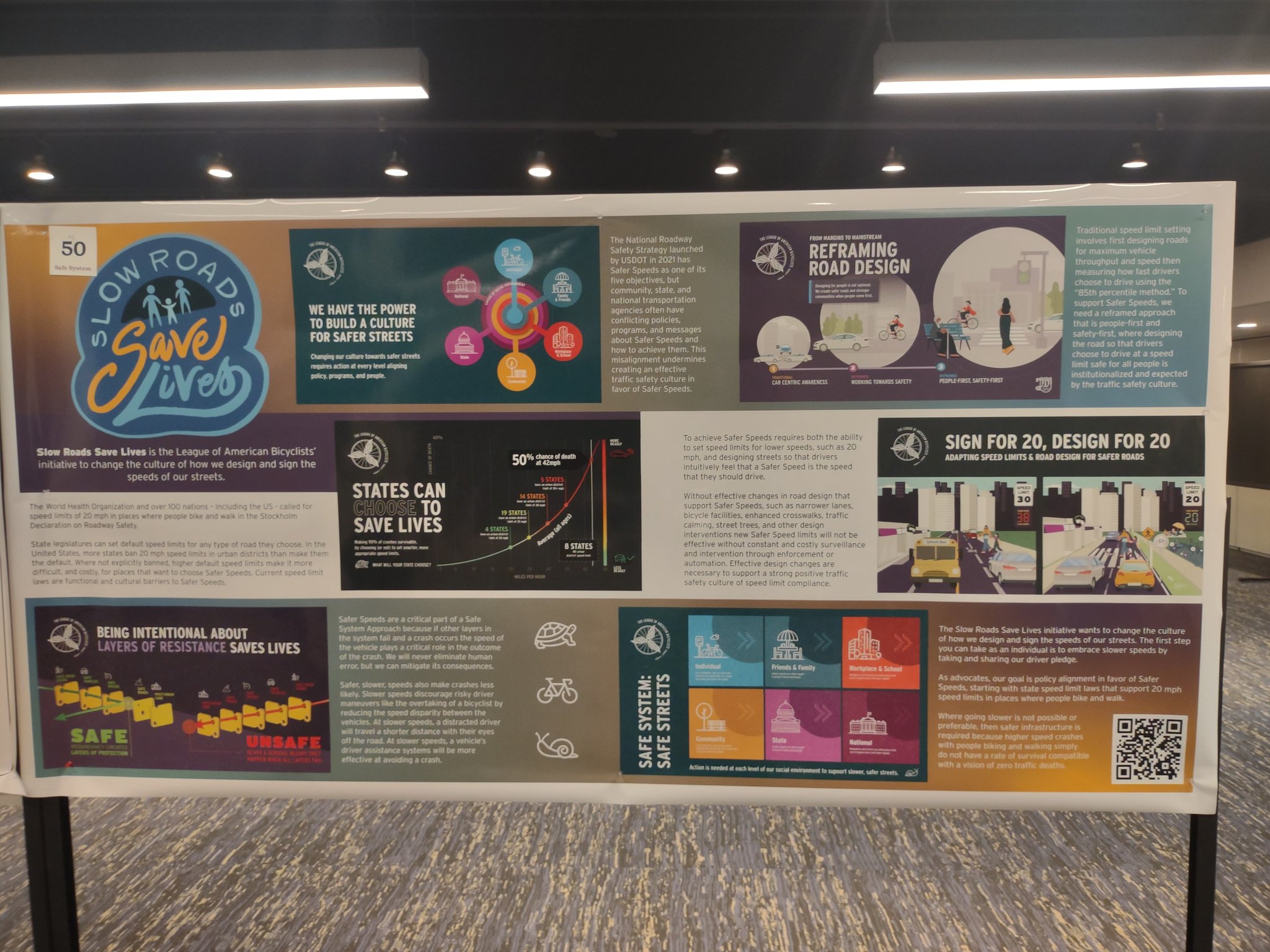DISCOVER YOUR LOCAL BICYCLING COMMUNITY
Find local advocacy groups, bike shops, instructors, clubs, classes and more!
Five takeaways from the AASHTO Safety Summit
Last week, I joined hundreds of other professionals at the second annual AASHTO Safety Summit. It was a great conference focused on our nation’s traffic safety crisis and the key role that state Departments of Transportation play in addressing that crisis. If you’d like to take a deep dive into the 2024 Safety Summit hosted by the American Association of State Highway and Transportation Officials (AASHTO), I encourage you to browse live tweets from the Conference by Barb Chamberlain, director of the Active Transportation Division, WA State Dept. of Transportation, and myself. For a much shorter version, here are my five takeaways:
- The Safety Summit is now an annual event
Last year was the first AASHTO Safety Summit and it was great to see a sequel. Even better, Jim Tymon, AASHTO’s executive director, repeatedly emphasized that the Safety Summit will be an annual event moving forward. His opening remarks focused on safety as a priority and on the success of the Summit, “I speak for all AASHTO members when I say state DOTs have no higher or urgent priority than safety. And attendance at last year’s and this year’s [safety] summit really does demonstrate that.” As an annual event, the Safety Summit will keep AASHTO members and staff focused on safety and ensure that Summits can build momentum off each other.
- Content is led by the Safety Committee
According to AASHTO, “Much of AASHTO’s work is done by forums, councils, committees, and task forces comprised of member department personnel who serve voluntarily.” The Safety Committee is one of seven Enterprise/Cross-discipline Committees, with a further seven subcommittees. Many of the speakers in breakout and plenary sessions came from the membership of the safety committee, with state DOT personnel like John Milton, Vice Chair of the Safety Committee and Director of Transportation Safety and Systems Analysis at Washington State DOT, leading multiple panels. The content and personnel of the Safety Summit reflected the work and interests of the Safety Committee and this provides valuable public insight into the work of AASHTO on safety.
- Speed is recognized as an important topic
I was at the AASHTO Safety Summit to present on the League’s Slow Roads Save Lives initiative during a poster session. So it was great to see speed addressed in many sessions, including plenaries such as “Comprehensive Approach to Managing Speeds” and “Speed Management Through Non-Infrastructure Strategies.” Speed was also a key theme in the lunch keynote by David Harkey of the Insurance Institute for Highway Safety, who also took part in a Slow Roads Save Lives webinar last year. While many state DOTs have supported flawed approaches like the 85th percentile method for speed limit setting, it was clear that there is interest and effort in changing that culture and recognizing how slower speeds can save lives.




- It’s still popular to point at human behavior
Traffic safety in the United States has traditionally been about changing human behavior. Infamously, the National Highway Traffic Safety Administration (NHTSA) said for years that 94% of crashes were due to human error. As one speaker said, this approach is like creating a water system where each person has to ensure that the water coming out of the tap is safe by boiling or filtering it. We don’t design water systems that way, and we shouldn’t design our transportation system so that safety depends on perfect actions by each end user. National Transportation Safety Board Chair Jennifer Homendy also asked the attendees to extend compassion and think beyond blame to see how DOTs can create safety even when people make bad decisions. Despite these promising messages, it was still popular to point to human behaviors to explain short-term changes in traffic deaths or to point to enforcement as the best way to control speeds rather than engaging with the underlying role of the roads built by DOTs or funding priorities for capacity rather than safety.
- Funding and legislation is a missing piece
While it is easy to say that safety is the number one priority, the fact is that safety is not the largest budget item of most, if any, state DOTs. At the federal level, the National Highway Performance Program, which supports the capacity of the National Highway System, was funded for over 29 billion dollars in 2023 and the Highway Safety Improvement Program, which supports a significant reduction in traffic fatalities and serious injuries on all public roads, was funded for slightly over 3 billion dollars in 2023. Almost 10 times the funding goes to capacity over safety, and books could be written about how the culture of capacity over safety has been created by and persists in American transportation agencies. As a Safety Summit for professionals, the focus was on things that people can implement within their current funding environments but at some point saying “safety first” while funding “capacity first” will need to be addressed.